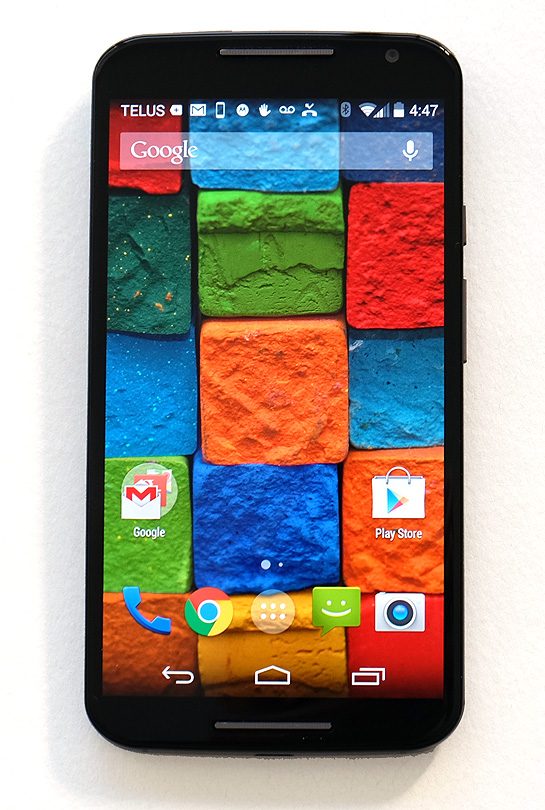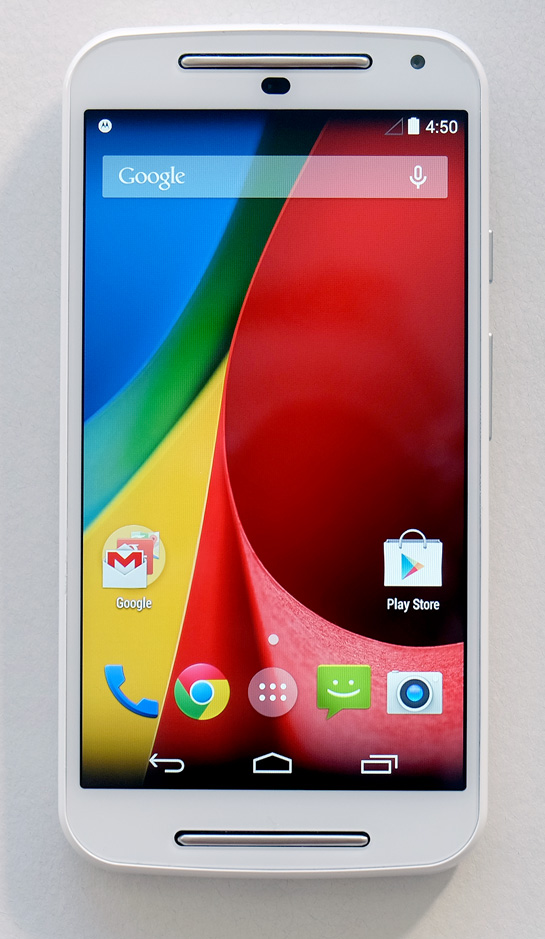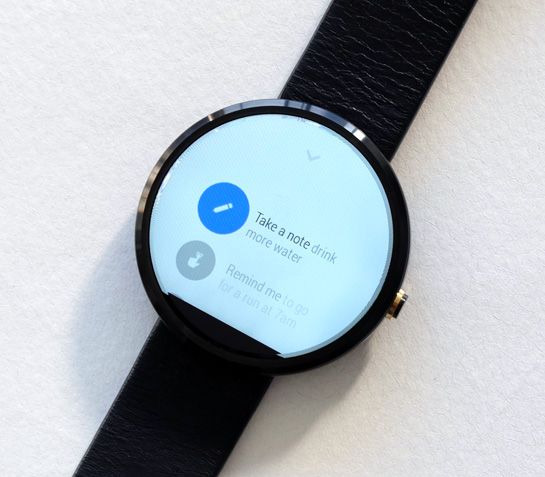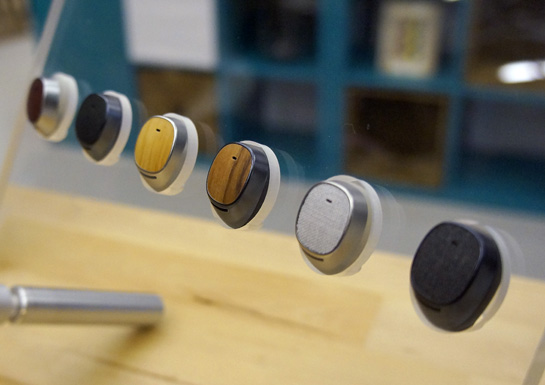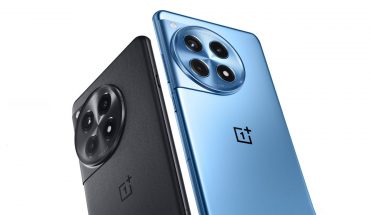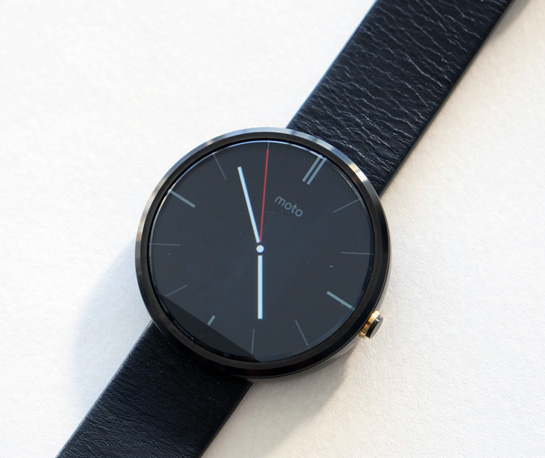 Only a few days ago, Motorola unveiled its latest quartet of products in newer models of the Moto X and Moto G smartphones, plus its new smartwatch, the Moto 360, and a new take on a Bluetooth headset in the Moto Hint. We’ve been playing around with the first three units since and here are some first impressions.
Only a few days ago, Motorola unveiled its latest quartet of products in newer models of the Moto X and Moto G smartphones, plus its new smartwatch, the Moto 360, and a new take on a Bluetooth headset in the Moto Hint. We’ve been playing around with the first three units since and here are some first impressions.
Motorola may be a company in transition at the moment, as its ownership moves from Google to Lenovo, but that hasn’t stopped it from moving ahead with its product plans. After flirting with complete collapse only a few years ago, the company’s ongoing strategy of focusing on mid-range and affordable smartphones has helped it gain some momentum.
Last year’s Moto X was the flagship device that came at a better price than competitors, and included unique voice-activation features that hadn’t been seen on other handsets. It ceded the crown of ‘most powerful device’ to its various flagship competitors, opting instead to offer a solid experience that would attract consumers who weren’t willing to pay top dollar.
The new Moto X carries on the same legacy, even though Motorola hasn’t yet announced pricing (we expect it to be in the $500 range). With a larger 5-inch AMOLED display, faster processor and improved camera, this is a phone that may not go toe-to-toe with the highest-end smartphones coming from the likes of Apple, Samsung, LG and HTC, but is nonetheless more than capable. Like its predecessor, it has Active Display, where the time can be displayed by simply waving your hand over the screen while it’s off. Hold down any of the notification buttons and you can see them pop up on the display.
The hand-waving also extends to incoming calls, wherein you can silence the ringer by waving over the phone.
Touchless Control, where you can command the phone to perform certain tasks, even when the screen is locked, is also back and now customizable. With the previous model, only “OK, Google Now” would work, but you can now record and program your own launch phrase. This can be anything from a name to a salutation and to something personal to you. It learns your voice and only responds through recognition, meaning no one else could unlock the phone using the same phrase.
The voice activation extends to driving and calendar, allowing you to issue commands or request appointment information on the fly.
The hand-twisting Quick Capture camera feature is back, too. By twisting your hand while holding the phone, the camera launches automatically. Image quality seems to be noticeably better this time around, though the jury’s out on whether it is a real leap forward.
It will come in either black or bamboo, but no other colours. While U.S. customers have the option of going through Moto Maker to choose their own colour schemes, the service isn’t yet available in Canada. One workaround is to order one through a friend or relative south of the border.
Pricing has yet to be revealed, but Telus has been confirmed as the lone carrier to offer the Moto X right now. Whether or not that exclusivity is limited in duration is also unclear at this time.
Meanwhile, the new Moto G is a step up from the two models that preceded it. The first Moto G was a $200 unlocked handset that catered to anyone looking for a phone that offered the latest version of Android without breaking the bank. In May, the Moto G LTE followed, offering the faster connection speeds of LTE.
This new model doesn’t have LTE, but does have Android KitKat, snappier processor, better camera and a larger 5-inch IPS display that is easily among the best of any smartphone in the $200 price range. There are no real bells and whistles here, including the special features in the Moto X, so consider this an entry-level of budget phone that offers good bang-for-your-buck performance.
Pricing also hasn’t been confirmed for the Moto G, but it’s unlikely to be higher than $225.
The Moto 360 smartwatch is the most intriguing of this group, particularly because it takes a different approach to design and enters a still-nascent market. Smartwatches are slowly percolating as a trend, remaining unproven gadgets that may or may not resonate with consumers. Motorola revealed to us that the 360’s initial design was to be square-shaped, but it ultimately chose to go with the more traditional rounded form factor typical of time pieces. Opting for a leather strap rather than a rubber one also seems to be a nod to the fashion side of a wearable like this. A stainless steel model is also coming later in the fall.
Running on Android Wear, Google’s Android offshoot meant for wearable devices, the watch comes off as impressive. It doesn’t necessarily do anything differently from a software perspective when compared to other Android Wear smartwatches, but it does feel good to wear and is reasonably good on battery life. Or at least as good as it can be. After a few days, it will likely need to be recharged, but you can mitigate that by using the wireless induction charger as a nightstand clock to keep the battery topped up every night.
The watch itself is generally aimless without its connected phone nearby. Incoming messages, calls and emails can be viewed on the watch, and music playback controlled as well. It measures steps, calories and activity, as well as heart rate. Saying “OK, Google” allows you to do a Google search, bring up calendar appointments, the weather and even how many steps you took throughout the day.
The Moto 360 will retail for $279 and hit store shelves soon.
Last but not least is the Moto Hint, a unique Bluetooth headset that is especially designed to work seamlessly with Moto devices, but seems to have a flair for spreading out to others, too. As an effective extension of the Moto X, the Hint is always on call, waiting for the launch phrase to do relay commands to the phone. Incoming calls and text messages will also be relayed back to you through the Hint. Calling back or responding can be done without even touching the phone.
These voice-activation features are limited to the Moto X, but the headset will work with any Bluetooth-enabled phone, so even if you like it for the comfort and low-profile footprint, the Hint is still viable. It will retail for about $150 and come to market later in the fall.

